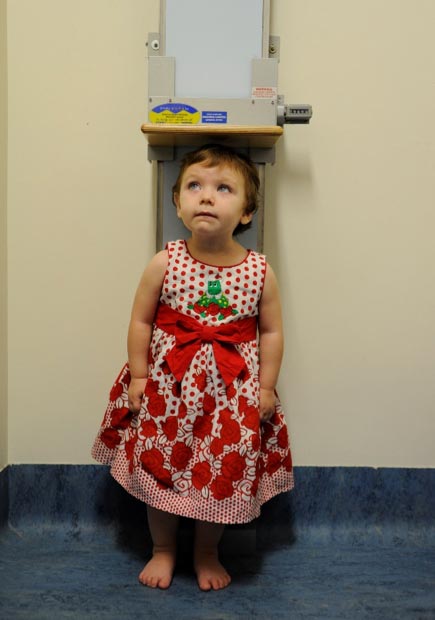How is Cord Blood Used?
Cord blood can be used to treat patients who are suffering from life threatening diseases.
Due to its ease in matching, over 90% of patients are able to find a suitable cord blood for transplant.
During the past 24 years, over 25,000 cord blood transplants have been undertaken in both children and adults as a curative treatment for diseases including:
• Malignancies such as leukaemias and lymphomas;
• Blood disorders such as Aplastic Anaemia, Fanconi Anaemia and Thalassaemia;
• Immune deficienciesd
• Metabolic storage diseases.
Thanks to scientific research in this field, we are constantly researching further diseases and conditions that can be successfully treated with the stem cells found in cord blood.
Recipient Story
 Alyssa in 2012. Photo by Jimmy Pozaric, courtesy of Sydney Children’s Hospital, Randwick |
Alyssa is now a happy-go-lucky 10 year old, but her life might not have turned out this way if not for lots of dedicated people and organisations. In August 2010 at 10 months old, Alyssa became very unwell with fevers and a rash. It was initially thought that these symptoms were due to an infection, but unfortunately was diagnosed with acute lymphoblastic leukaemia (ALL), needing treatment at Sydney Children’s Hospital, Randwick (SCH). This brought many concerns for Alyssa’s parents: How would it affect her older sister? Would the treatment be successful? How would they cope with commuting to Randwick? Alyssa tolerated eight months of chemotherapy at SCH like a trooper. Her family learnt to prioritise quality time and aimed to normalise lifestyle and activities whenever possible. She came home in October 2010, after lots of time in hospital, taking a long time to attain remission. Classified as a poor responder, there was early talk of a bone marrow transplant. Her 2 year old sister did not have a compatible tissue type, but a search for a suitable unrelated donor found a well matched Australian cord blood. She underwent the cord blood transplant in April 2011. These were scary times for the family. The first three weeks were very difficult; Alyssa endured constant fevers, painful mouth ulcers and didn’t want to feed. She needed multiple blood and platelet transfusions. She was discharged to the on-campus Ronald McDonald House accommodation 48 days after the transplant. There were more rocky times after the transplant, needing another two hospital admissions within 3 months of the transplant. Due to the treatment Alyssa is short for her age, but she is good academically, does dance classes five days a week and is a testament to the life-saving capacity of cord blood transplant. |
How is the cord blood collected?
Healthy mothers 18 years or older may be eligible to donate cord blood in one of the participant hospitals.
The mother will be asked to complete a questionnaire and give a blood sample which is used to determine eligibility. After the baby’s birth, the blood remaining in the cord and placenta is drained into a blood collection bag. Once collected, the cord blood is tested for infectious diseases and then stored frozen in liquid nitrogen vapours for future use. After a period of six months or 180 days, the mother is contacted as follow-up to check on the health of the family and baby. Once follow-up is complete, the cord blood is made available for patients in need of a transplant.
AusCord has strict quality standards to protect patient safety. Only cord blood units that meet these standards will be stored and listed on international registries for patients in need of a transplant.
What are the risks?
There are no risks to either the mother or the baby. The cord blood is collected after the cord has been clamped and cut.
Are there any costs charged for donating cord blood?
There are no costs charged to the family who donate cord blood nor is there any cost to potential Australian patients receiving a cord blood transplant. The national public banking network is funded by the Government.
What is the difference between public and private cord blood banking?
Private cord blood banks collect and store cord blood at a fee for the exclusive use of your baby (or a relative if appropriate), while public cord blood banks collect and store blood for the use of anyone in the world, at no cost.











